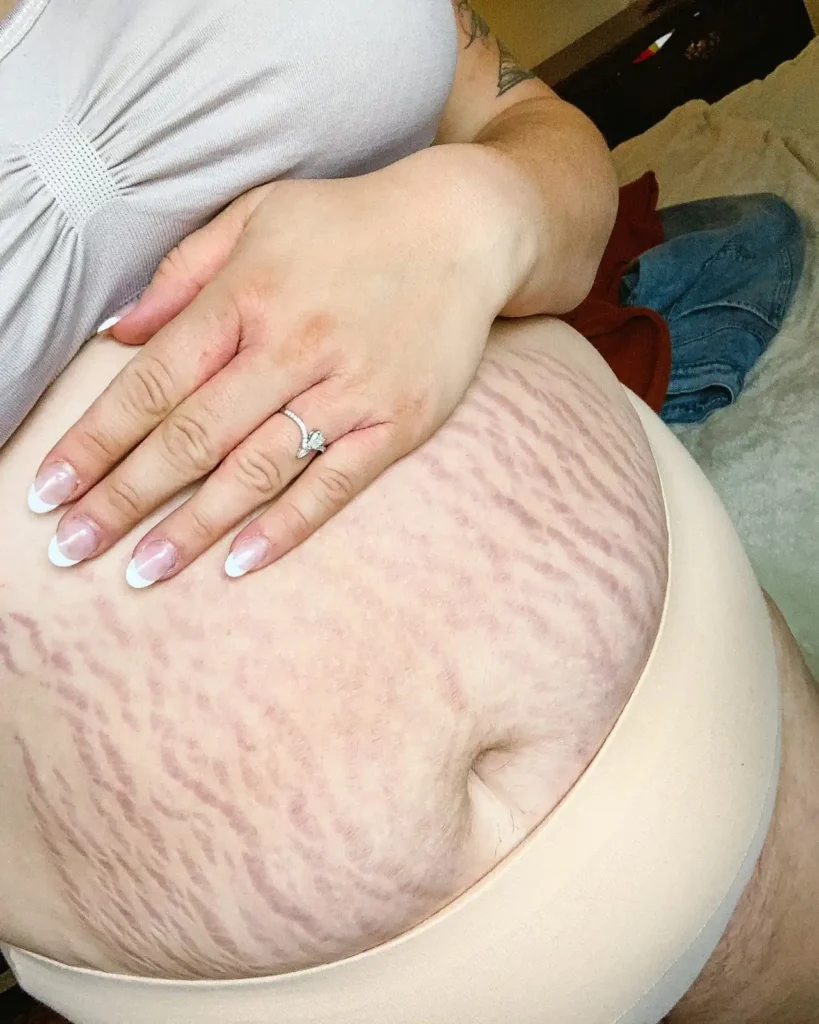Stretch marks, those often unwelcome streaks on the skin, can be a source of concern for many individuals. Whether they appear during pregnancy, puberty, or due to rapid weight gain or loss, they can affect one’s self-confidence and body image. Understanding why they appear and how to address them can provide valuable insight into managing this common dermatological issue.
What Are Stretch Marks?

Stretch marks, medically known as striae, are a form of scarring on the skin characterized by lines or streaks. They typically occur when the skin is stretched rapidly, causing the collagen and elastin fibers in the dermis to break down. This breakdown results in the formation of thin, reddish or purple lines that gradually fade to a lighter color over time.
Why Do They Appear?
Several factors contribute to the development of stretch marks:
- Puberty: Adolescence is a period of rapid growth and hormonal changes, which can lead to the stretching of the skin and the formation of stretch marks, particularly in areas such as the thighs, hips, and breasts.
- Pregnancy: Perhaps the most well-known cause of stretch marks, pregnancy often leads to significant stretching of the abdomen as the baby grows. Hormonal changes during pregnancy can also affect the skin’s elasticity, making it more prone to stretch marks.
- Weight Fluctuations: Rapid weight gain or loss can put stress on the skin, causing it to stretch beyond its capacity. This commonly occurs in individuals who undergo rapid changes in body weight, such as those who gain or lose weight quickly through dieting or intense exercise.
- Genetics: Some people are genetically predisposed to developing stretch marks. If your parents or close relatives have them, you may be more likely to experience them yourself.
- Corticosteroid Use: Prolonged use of corticosteroid medications, whether topical or oral, can weaken the skin’s collagen and elastin fibers, making it more susceptible to stretch marks.
How to Get Rid of Stretch Marks

While stretch marks are a natural part of the skin’s response to stretching, there are several methods to help reduce their appearance:
- Topical Treatments: Over-the-counter creams, lotions, and oils containing ingredients such as retinoids, hyaluronic acid, and vitamin E may help improve the appearance of stretch marks by promoting collagen production and improving skin elasticity.
- Medical Procedures: Dermatological treatments such as microdermabrasion, chemical peels, laser therapy, and microneedling can help reduce the appearance of Dermatological streaks by stimulating collagen production and promoting skin renewal.
- Maintaining a Healthy Lifestyle: Eating a balanced diet rich in vitamins and minerals, staying hydrated, and exercising regularly can help improve overall skin health and elasticity, potentially reducing the likelihood of developing new Dermatological streaks.
- Moisturizing: Keeping the skin well-hydrated with moisturizers can help improve its elasticity and reduce the severity of existing Dermatological streaks.
- Time: While it may not be the quickest solution, many Dermatological streaks naturally fade and become less noticeable over time as the skin heals and regenerates.
Final Thoughts
Stretch marks are a common dermatological concern that can affect individuals of all ages and genders. While they may not pose any health risks, they can impact one’s self-esteem and body confidence. Understanding the factors that contribute to their development and implementing strategies to address them can help individuals feel more comfortable and confident in their skin. Whether through topical treatments, medical procedures, or lifestyle changes, there are various options available to manage Dermatological streaks and achieve smoother, more resilient skin.
Discover more trends:
- Keep an Eye Out for Early Signs of Rheumatoid Arthritis: A Guide
- Nicole Kidman’s Revealing Dress Sparks a Heated Discussion
- Watch Out For The Early Signs Of Rheumatoid Arthritis
- Follow us on Facebook







